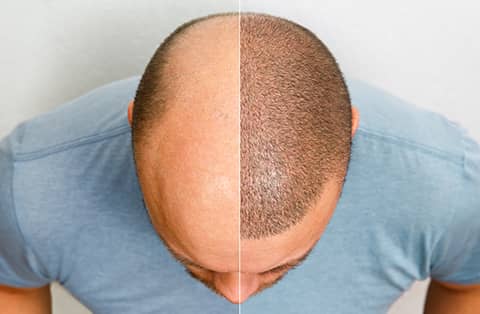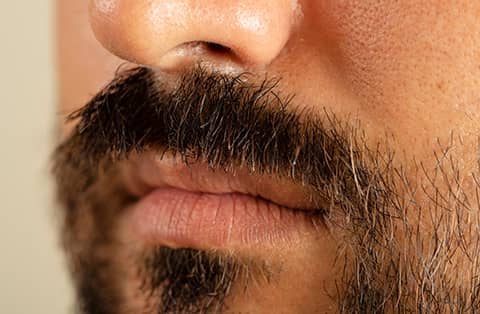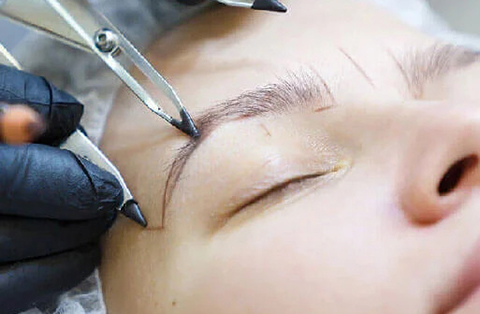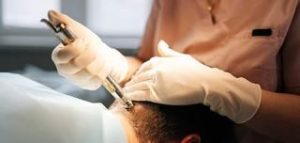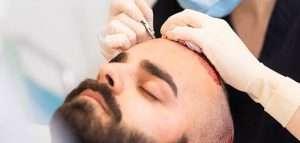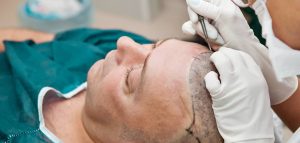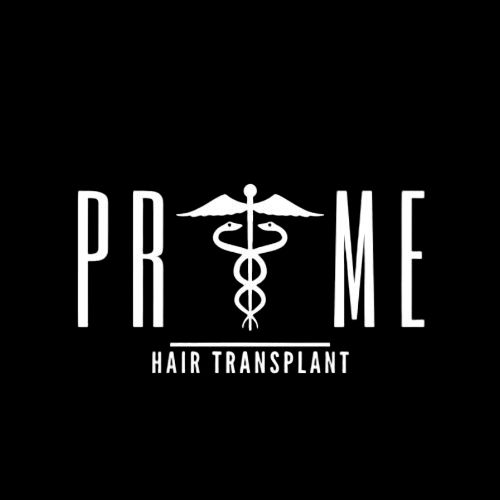Are you struggling with loose skin and weakened stomach muscles after pregnancy or weight loss? A tummy tuck with muscle repair might be the solution. This procedure not only removes excess skin but also tightens the abdominal muscles, giving you a firmer, flatter stomach.
Whether you’re curious about the surgery, the recovery process, or the benefits, this guide will walk you through everything you need to know.
Discover how a tummy tuck with muscle repair can restore your core strength, enhance your appearance, and boost your confidence in ways that diet and exercise alone may not.
What Is a Tummy Tuck with Muscle Repair?
A tummy tuck with muscle repair, also known as abdominoplasty with rectus muscle repair, is a plastic surgery designed to flatten the stomach by removing excess skin and tightening weakened or separated abdominal muscles. This condition, called diastasis recti, often occurs after pregnancy or significant weight loss, leaving the core less stable and the abdomen protruding.
During the procedure, the surgeon sutures the abdominal muscles back together, restoring their strength and creating a firmer, more toned midsection. This surgery not only improves the appearance of the stomach but can also enhance posture and core stability.
Why Do Abdominal Muscles Need Repair?
Abdominal muscles often need repair due to a condition called diastasis recti, which occurs when the muscles separate. This can happen after pregnancy, significant weight gain, or rapid weight loss. When these muscles weaken or stretch, the core loses its strength, causing a protruding belly and poor posture.
Muscle repair during a tummy tuck tightens and brings these muscles back together, restoring core stability. Without repair, issues like back pain, weak abdominal support, and a bulging stomach can persist. Repairing the muscles not only enhances appearance but also improves overall function and posture.
Am I a Good Candidate for Tummy Tuck Surgery with Muscle Repair?
This surgery is ideal for people looking to restore a firmer, flatter stomach, especially when exercise and diet haven’t provided the desired results.
You may be a good candidate if you:
Have loose or sagging abdominal skin
Suffer from separated abdominal muscles (diastasis recti)
Struggle with a protruding belly despite exercise
Are in good overall health and at a stable weight
Have completed your family and don’t plan future pregnancies
Consulting with a qualified surgeon is the best way to confirm if this procedure is right for you.
Do a Tummy Tucks Include Muscle Repair?
Yes, certain types of tummy tuck surgeries include muscle repair, while others do not. The choice depends on your specific needs and the extent of muscle separation or skin laxity. Here’s a breakdown of the main types of tummy tucks and whether they involve muscle repair:
Full Tummy Tuck (Abdominoplasty)
A full tummy tuck typically includes muscle repair. This procedure addresses both loose skin and muscle separation (diastasis recti) across the entire abdomen.
The surgeon tightens the abdominal muscles by suturing them back together, and excess skin is removed. It’s ideal for those with significant skin laxity and muscle weakness, often after pregnancy or major weight loss.
Mini Tummy Tuck
A mini tummy tuck does not typically involve muscle repair. This procedure focuses on the lower abdomen, removing a small amount of excess skin below the belly button. Since it targets only a specific area, muscle tightening is usually unnecessary. It’s best for patients with mild skin sagging and no significant muscle separation.
Extended Tummy Tuck
An extended tummy tuck usually includes muscle repair and is more comprehensive than a full tummy tuck. It not only tightens the abdominal muscles but also removes excess skin from the sides and lower back. This procedure is often chosen by those who have undergone massive weight loss and need more extensive body contouring.
How Muscle Repair Impacts a Tummy Tuck Procedure?
Muscle repair significantly enhances the results of a tummy tuck procedure by restoring core strength and improving the overall contour of the abdomen. Here’s how it impacts the surgery:
Tightens Separated Muscles
Muscle repair addresses diastasis recti, a condition where the abdominal muscles have separated, often after pregnancy or significant weight fluctuations. By suturing the muscles back together, the surgeon creates a firmer, flatter midsection, resulting in a more toned appearance.
Enhances Core Stability
Tightened muscles provide better support for the spine and core. This can improve posture, alleviate back pain, and enhance overall mobility, making everyday activities easier.
Extends Recovery Time
Including muscle repair makes the procedure more complex, which can extend recovery time compared to a tummy tuck without muscle tightening. Patients may experience more discomfort and require longer rest periods to heal properly.
Provides Long-Lasting Results
Because muscle repair strengthens the core and corrects muscle separation, the results are more durable. Patients can expect a long-lasting, flatter, and firmer abdomen if they maintain a stable weight post-surgery.
Recovery Process After Tummy Tuck with Muscle Repair
Recovering from a tummy tuck with muscle repair requires patience and proper care to ensure the best results. Since this procedure involves both skin removal and muscle tightening, recovery can be more involved than a standard tummy tuck.
Related Article: Tummy Tuck Recovery Timeline
Following your surgeon’s post-operative instructions is crucial for a smooth and successful healing process. Let’s explore the key aspects of recovery, including post-surgery care, managing pain, and the expected timeline.
Post-Surgery Care Instructions
After surgery, you’ll need to follow detailed care instructions to promote healing and prevent complications. These may include:
Wearing a compression garment: This helps reduce swelling and supports the abdomen during healing.
Caring for drains: In some cases, drains are placed to remove excess fluids. Your surgeon will provide guidance on how to clean and monitor them.
Avoiding heavy lifting or strenuous activities: It’s important to avoid movements that can strain your abdominal muscles.
Maintaining proper rest: Sleep with your upper body slightly elevated to reduce pressure on your abdomen.
Managing Pain and Discomfort
Pain and discomfort are expected, especially during the first week after surgery. However, these can be managed effectively with prescribed medications and at-home care:
Medications: Your surgeon will prescribe pain relievers and may also provide muscle relaxants to ease discomfort.
Gentle movement: While resting is essential, light walking helps improve circulation and prevent blood clots.
Ice packs: Applying cold compresses to the abdominal area can help reduce swelling and ease soreness.
Timeline for Full Recovery
The recovery timeline varies, but most patients follow a general progression:
Week 1: Expect to take it easy with limited activity. Swelling and bruising are common, and you’ll need assistance with daily tasks.
Weeks 2-4: You’ll gradually increase movement, but avoid any strenuous activities or heavy lifting. Light activities, like walking, are encouraged.
Weeks 6-8: By this stage, most swelling has subsided, and you can slowly return to normal activities. However, your surgeon may advise against high-impact exercises until your muscles fully heal.
3-6 months: Final results become more visible as swelling completely resolves, and the abdominal area firms up. You’ll feel stronger, with restored core stability.
Benefits and Risks of Tummy Tuck with Muscle Repair
A tummy tuck with muscle repair offers significant improvements for individuals struggling with loose skin and separated abdominal muscles.
While the procedure provides both functional and aesthetic benefits, it also carries certain risks. Understanding the potential rewards and complications will help you make an informed decision about this surgery.
Potential Benefits for Abdominal Contour
A tummy tuck with muscle repair can transform your abdominal appearance and function in several ways:
Flatter, Firmer Abdomen: By tightening both the muscles and the skin, this surgery provides a flatter, smoother stomach. It’s especially effective for those who’ve experienced muscle separation (diastasis recti) after pregnancy or weight loss.
Enhanced Core Strength: Repairing separated abdominal muscles restores core stability, improving posture and reducing strain on the back. This can alleviate lower back pain and improve your overall mobility.
Better Fit in Clothing: Many patients find that their clothes fit more comfortably and flatter their figure after surgery. Excess skin and a protruding belly are reduced, resulting in a more contoured shape.
Long-Lasting Results: If maintained with a healthy lifestyle, the results of a tummy tuck with muscle repair are long-lasting, providing both aesthetic and functional improvements for years to come.
Possible Complications and How to Avoid Them
Like any surgery, a tummy tuck with muscle repair comes with potential risks. Knowing what to expect can help minimize complications:
Infection: Infection at the incision site is possible but can be avoided by following your surgeon’s post-operative care instructions, such as keeping the area clean and taking prescribed antibiotics.
Blood Clots: Patients are at risk of developing blood clots, especially if they remain inactive after surgery. To avoid this, light walking and proper hydration are recommended soon after surgery.
Prolonged Swelling or Numbness: Some swelling and numbness in the abdomen are common, but these usually subside within a few months. To reduce swelling, wear your compression garment as directed and avoid salt-heavy foods.
Scarring: While scarring is inevitable, your surgeon will aim to place incisions in less noticeable areas. Following scar care instructions and using silicone sheets or gels can help reduce the appearance of scars over time.
While the benefits often outweigh the risks for many patients, it’s important to have a thorough consultation with your surgeon to discuss your individual risk factors and how to best prevent complications.
Tummy Tuck with Muscle Repair Cost
The cost of a tummy tuck with muscle repair can vary significantly depending on several factors. This procedure is typically more expensive than a standard tummy tuck due to its complexity, but understanding the cost components can help you plan and make informed decisions.
Factors Affecting the Cost
Surgeon’s Experience and Expertise: Surgeons with advanced skills, years of experience, and a strong reputation tend to charge more for their services. While choosing a highly qualified surgeon may increase the cost, it often provides greater safety and satisfaction.
Geographic Location: The cost of a tummy tuck with muscle repair can vary by region. Larger cities or areas with a higher demand for cosmetic surgery usually have higher costs. In contrast, smaller cities or rural areas may offer lower prices.
Surgical Facility Fees: The cost includes fees for the operating room, anesthesia, and any necessary hospital stays. Accredited facilities with advanced technology and highly trained staff may contribute to a higher overall price.
Anesthesia Fees: Since a tummy tuck with muscle repair is performed under general anesthesia, anesthesiologist fees will be part of the total cost. These fees can vary depending on the anesthesiologist’s experience and location.
Post-Surgery Care and Follow-Ups: Recovery involves follow-up appointments, possible post-surgery garments, and medications. These additional costs may or may not be included in the initial quoted price, so it’s essential to clarify this with your surgeon.
Estimated Price Range
The average cost of a tummy tuck with muscle repair typically ranges between $8,000 to $15,000. This can vary based on the factors mentioned above. Some patients may find lower costs in certain regions, while others may pay more in metropolitan areas or with more experienced surgeons.
Tummy Tuck Prices in Turkey
The cost of a tummy tuck with muscle repair in Turkey typically ranges between $3,500 to $6,000, significantly lower than in countries like the United States or the UK, where the same procedure can cost between $8,000 to $15,000.
These lower prices are a major draw for international patients, without compromising on the quality of care. Many packages in Turkey also include additional services like accommodation, transfers, and post-surgery care, which further enhances the appeal for medical tourists.
Why Turkey Became a Medical Tourism Hub
Turkey has become a leading destination for medical tourism due to several factors:
Affordable Pricing: The lower cost of procedures in Turkey is one of the primary reasons it attracts thousands of patients from abroad. High-quality cosmetic surgeries are offered at a fraction of the cost compared to Western countries, thanks to Turkey’s lower cost of living and competitive healthcare market.
Highly Qualified Surgeons: Turkey boasts a large number of highly skilled, board-certified plastic surgeons who are trained in some of the best medical institutions around the world. Many of these surgeons are internationally recognized, ensuring patients receive top-quality care.
State-of-the-Art Facilities: Turkey has invested heavily in healthcare infrastructure, offering modern, fully equipped hospitals and clinics that meet international standards. Many facilities are accredited by organizations like the Joint Commission International (JCI), ensuring safety and quality.
Comprehensive Packages: Many Turkish clinics offer all-inclusive packages that cover everything from pre-surgery consultations to post-operative care, along with accommodation and transfers. This convenience makes the entire experience seamless for international patients.
Attractive Tourist Destination: Turkey’s rich history, beautiful landscapes, and vibrant culture make it an attractive destination for tourists. Many patients combine their surgery with a vacation, making it an appealing option for those seeking both medical care and a travel experience.
In summary, the combination of affordable costs, highly qualified surgeons, and advanced facilities has positioned Turkey as a top destination for cosmetic surgery, drawing patients from all over the world.
Insurance Considerations
A tummy tuck with muscle repair is generally considered a cosmetic procedure, meaning it’s not covered by insurance.
However, if muscle separation (diastasis recti) causes significant functional issues, such as chronic back pain or hernias, there is a chance some aspects of the procedure may be covered. It’s important to check with your insurance provider to understand your options.
Related Articles:
Can You Get a Tummy Tuck on the NHS?
The Ultimate Guide to Getting a Free Tummy Tuck
Tummy Tuck with Muscle Repair Before and After
A tummy tuck with muscle repair dramatically transforms the abdominal area. Before surgery, patients often have loose skin and separated muscles, resulting in a bulging stomach. After the procedure, the abdomen appears flatter, firmer, and more toned. Muscle repair strengthens the core, enhancing both posture and appearance.
See our gallery for real patient results!


